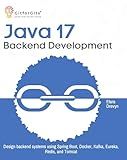Best Redis Client Tools to Buy in December 2025
To get the value of a key in Redis, you can use the GET command followed by the key name. For example, if you want to retrieve the value associated with the key "mykey", you would run the command GET mykey. This will return the value stored in that key, or nil if the key does not exist. It's important to note that Redis is a key-value store and values can be of various types such as strings, integers, or even complex data structures like lists or sets.
How to get the value of a key in Redis using the command line interface?
To get the value of a key in Redis using the command line interface, you can use the following command:
redis-cli GET key_name
Replace key_name with the name of the key you want to retrieve the value from. For example, if you have a key named user:1234 and you want to get its value, you would use the following command:
redis-cli GET user:1234
This will return the value stored in the key user:1234.
What is the function of the DUMP command in obtaining a serialized version of a key in Redis?
The DUMP command in Redis is used to obtain a serialized version of a key in the database. It essentially serializes the value stored in the specified key and returns it in a format that can be easily stored, transferred, or manipulated. This serialized value can then be used for a variety of purposes, such as backing up data, transferring data between different Redis instances, or analyzing the structure of the stored data.
What is the significance of the OBJECT IDLETIME command in determining the idle time of a key in Redis?
The OBJECT IDLETIME command in Redis is used to determine how long a key has been idle (not accessed or modified) in the database. This command can be useful for monitoring the activity of keys and deciding when to expire or remove them. By knowing the idle time of a key, developers can make more informed decisions about managing their Redis database, such as setting expiration times or implementing cache eviction policies. Overall, the OBJECT IDLETIME command provides valuable information for optimizing the performance and storage efficiency of a Redis database.
How to extract the value of a key in Redis that is stored as a set?
To extract the value of a key in Redis that is stored as a set, you can use the SMEMBERS command followed by the key name.
Here's an example of how to extract the values of a key called "myset":
SMEMBERS myset
This command will return all the members of the set stored at the key "myset". You can then use the returned values as needed in your application.



